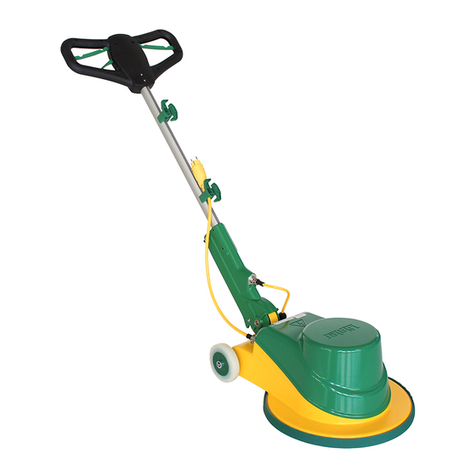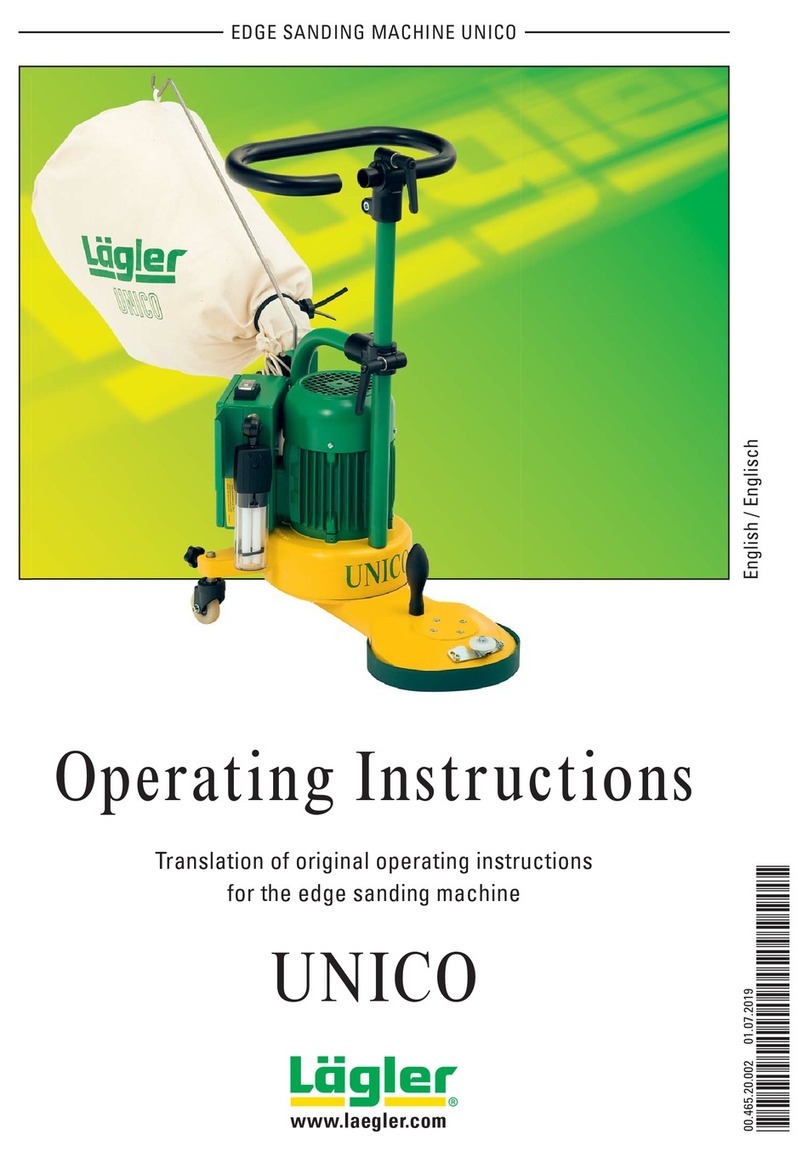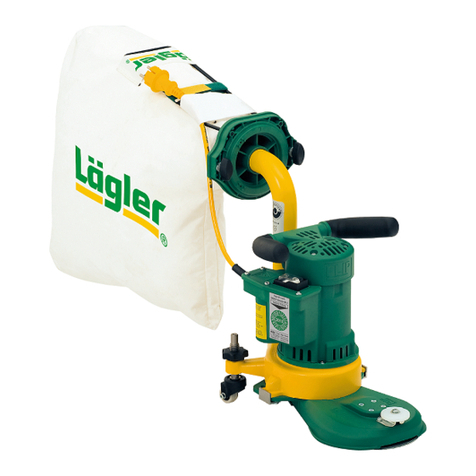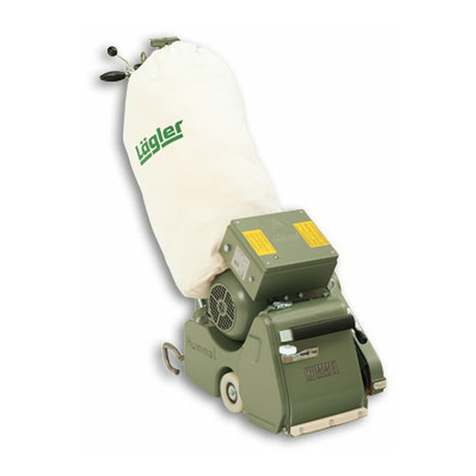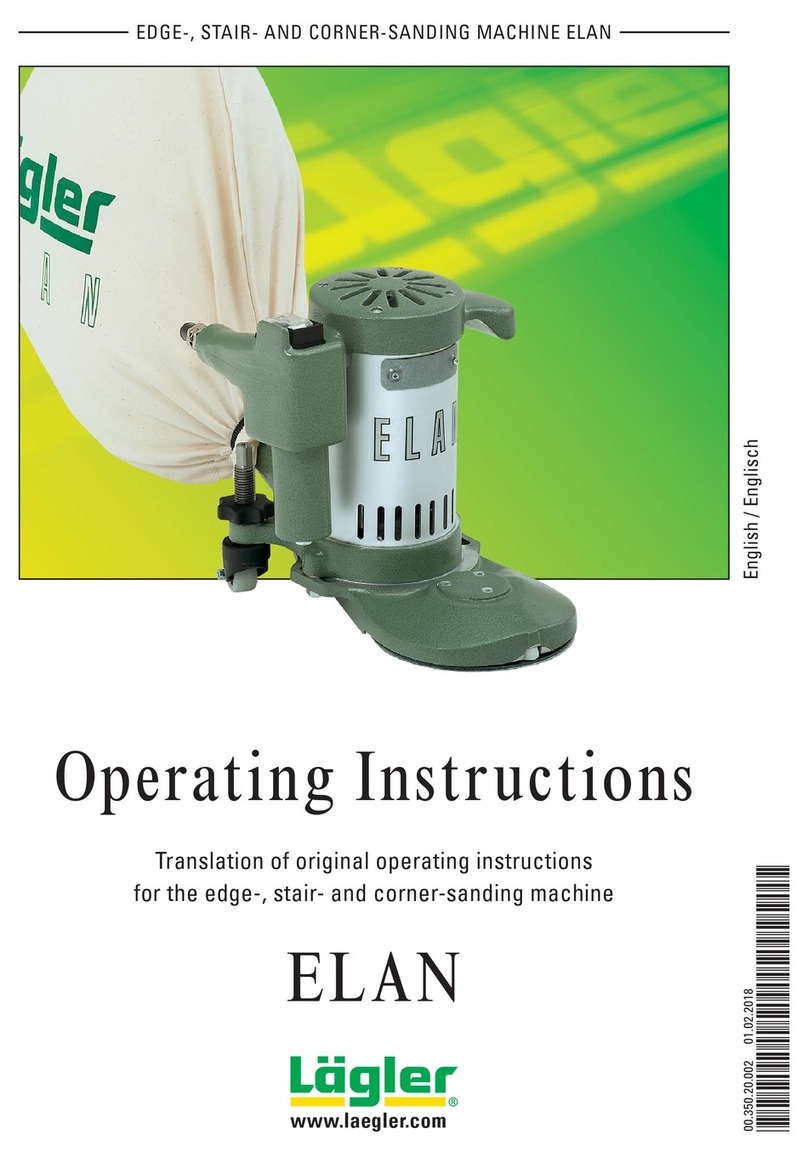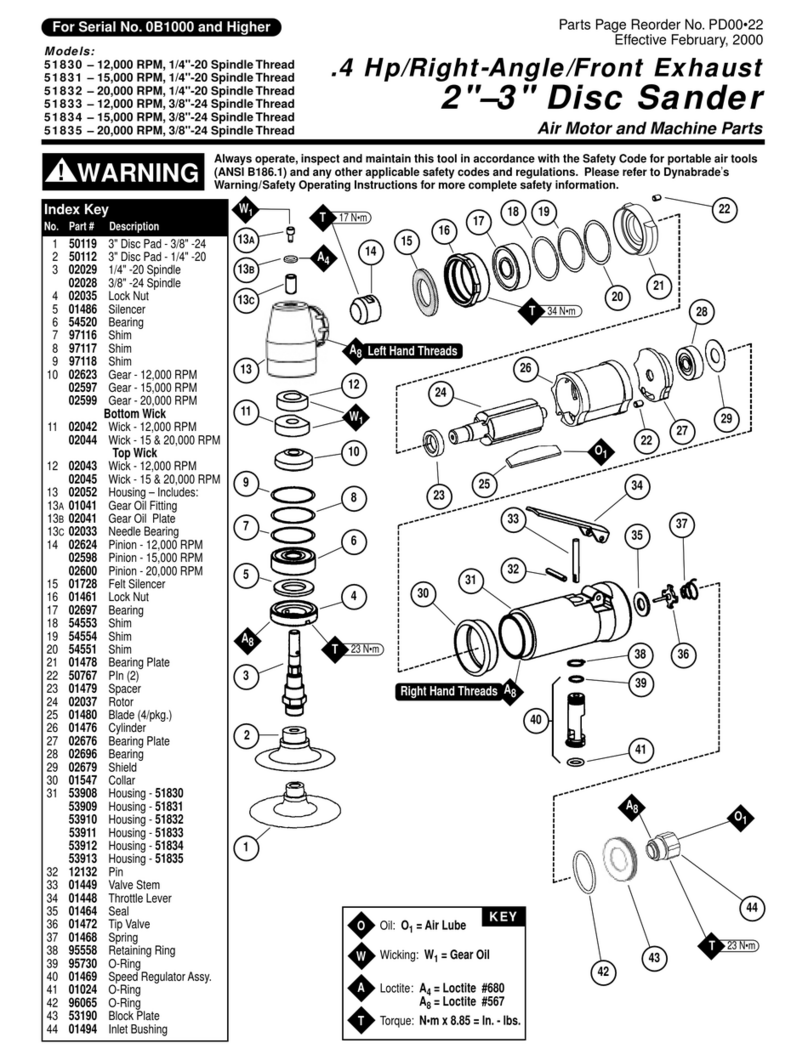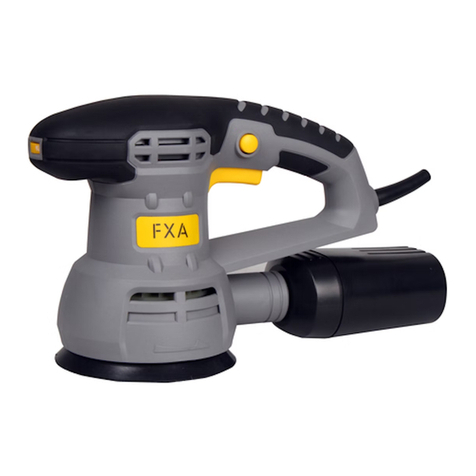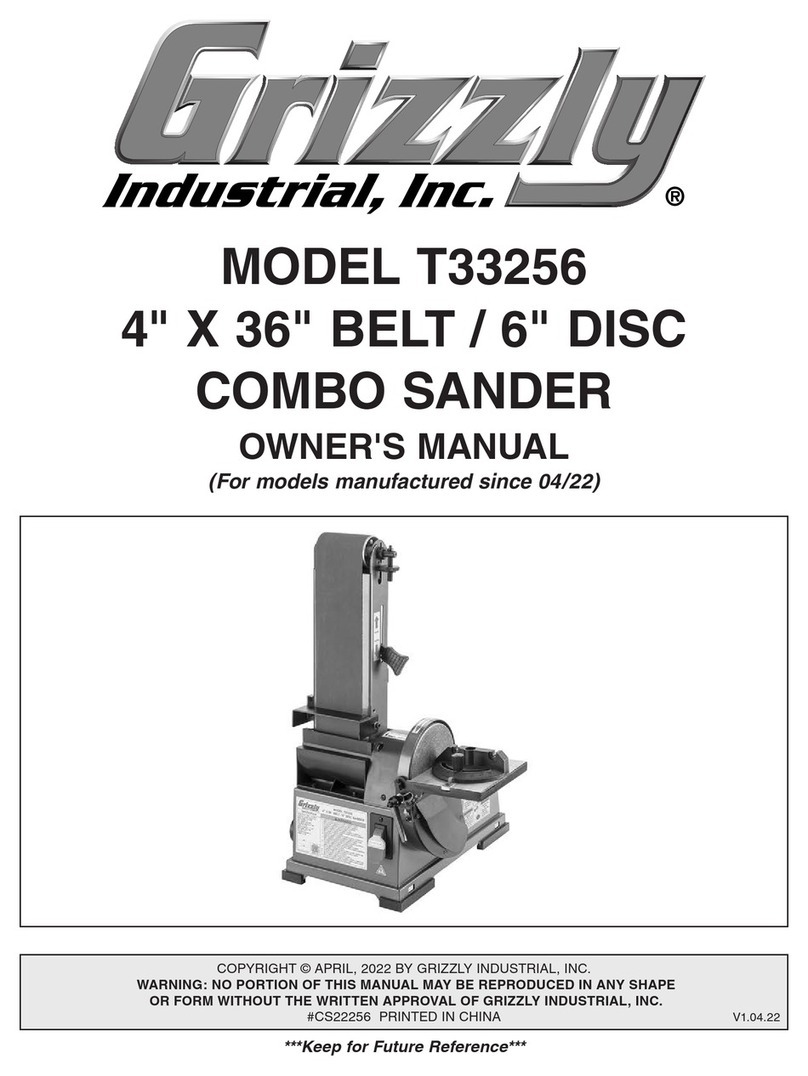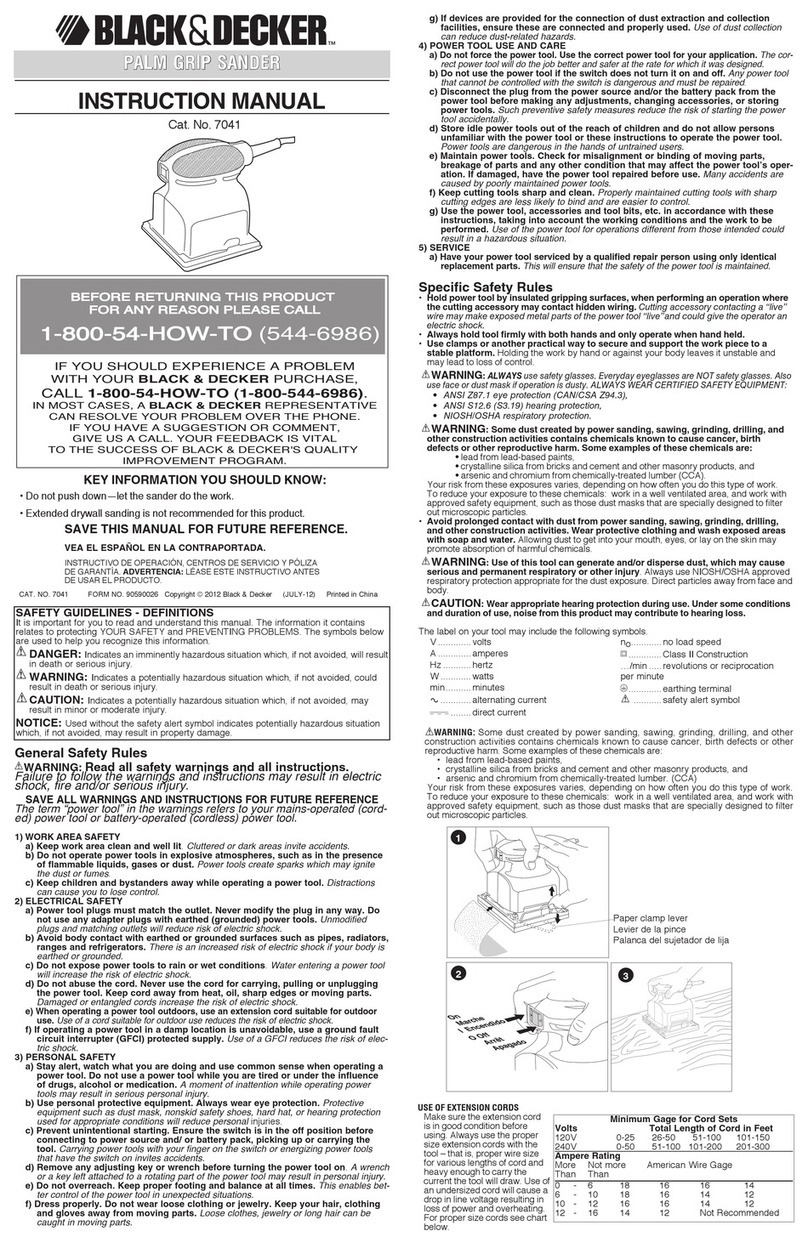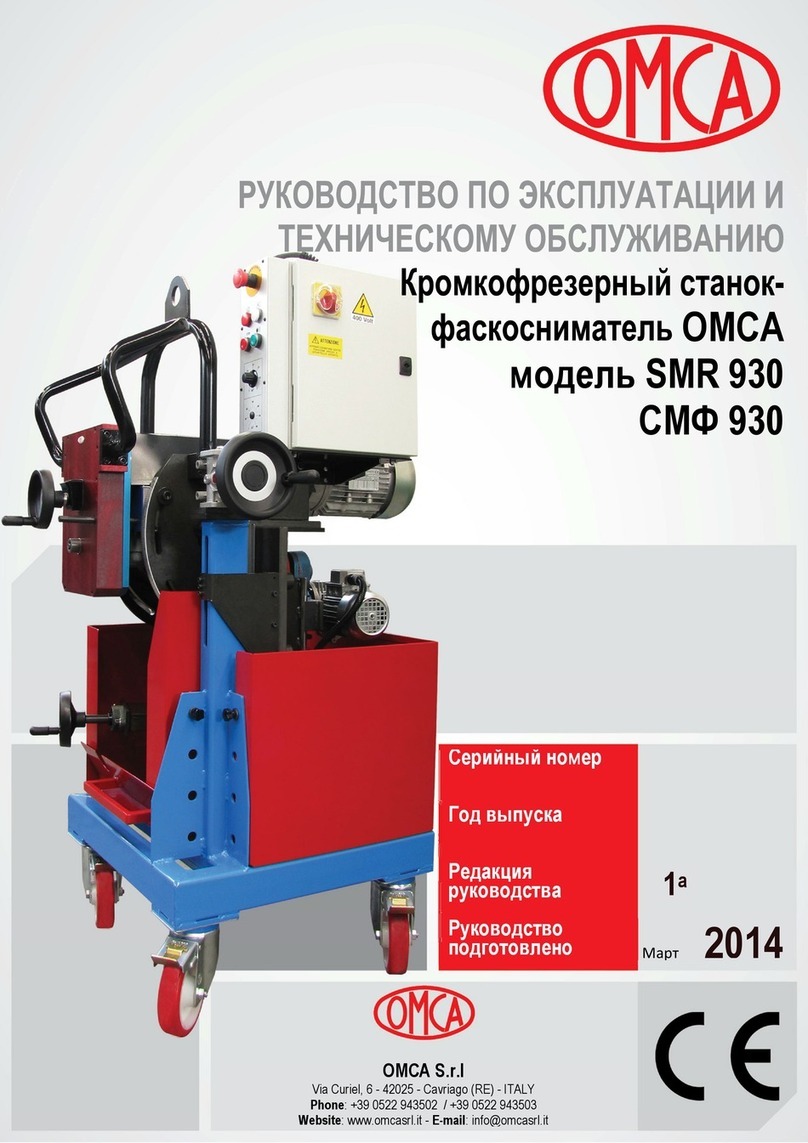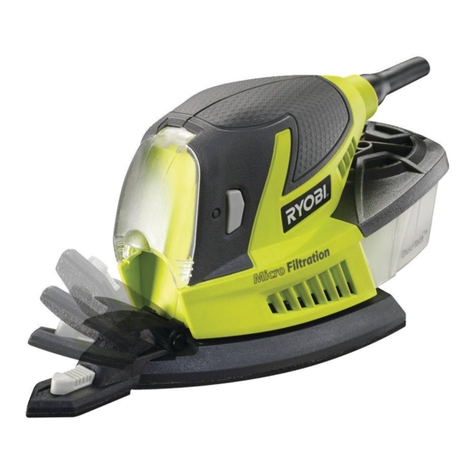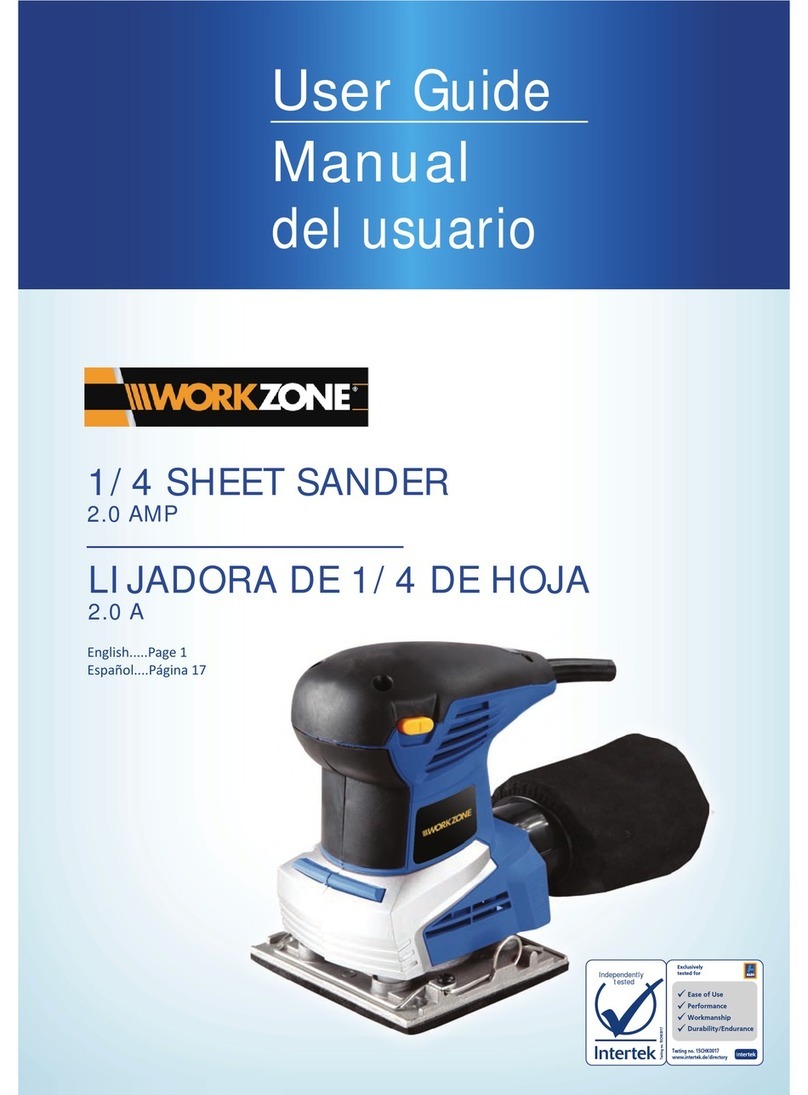
7
Manufacturer ................................................... Eugen LÄGLER GmbH
Machine type ....................................... Three disc sanding machine
Serial number ...............................................................see type plate
Year of manufacture .....................................................see type plate
Motor type ..................................................... Single-phase AC motor
Voltage .......................................................................... 230 V or 220 V
Frequency ................................................................ 50 or 60 Hz (CPS)
Power output ............................................................................ 1.8 KW
Fuse ................................................................................................16 A
Insulation class .................................................................................. F
Protection class ...........................................................................IP 54
Safety devices...............................................Zero voltage triggering,
Temperature switch as
overload protection in the motor
Capacitor ...................................................................................... 40 µF
Sanding gear diameter ...............................................200 mm (7 7/8“)
Speed of sanding disc
- with 50 Hz (CPS) motor............................... approx. 600 1/min (rpm)
- with 60 Hz (CPS) motor............................... approx. 720 1/min (rpm)
Weight of sanding unit .................................................54 kg (119 lbs)
Weight of chassis/extraction element .........................24 kg (53 lbs)
Total weight .................................................................. 78 kg (172 lbs)
Overall length ............................................................. 870 mm (34 ¼“)
Overall width ............................................................... 490 mm (19 ¼“)
Overall height ................................................................. 990 mm (39“)
Filter dimension ......................................... 1.43 m² (15.4 square feet)
Filter class ...........................................................................................C
Running time after shut off .....................................................< 5 sec.
Dust emission in working area
(according to DIN 33892) ..........< 0.2 mg/m³ (0.0024 gr. / cu. yd.) air
Noise emission in working area,
(measurement taken 1.5 m (5 ft.) above floor at operator’s ear)
Sanding of beech parquetry
Sanding paper grain 80 .......................................................80 dB(A)
Removal of glue residue
- using milling discs ............................................................80 dB(A)
- using steel brushes ..........................................................80 dB(A)
Tolerance for all measurements............................................. 4 dB(A)
TECHNICAL DATA
Technical data
2
Note on noise emission:
The values given are emission measurements. It
is important to note that these values cannot de-
scribe the entire noise level at the working place.
Although there is of course a relation between
emission and entire noise level, you cannot con-
clude if additional precautionary measures are
necessary. The entire noise level is influenced
by factors such as the duration of the emission,
quality of the working area, other noise sources
like other machines or processes. Legal noise
levels may even differ from country to country.
This information is given in order to allow users
a better estimation of the risks of noise.
Filter examination certificate available on
request.
Note:
The above-mentioned motor data refers to the
machines used in the Federal Republic of Ger-
many or USA. Exported machines could have
different data which can be found on the motor
type plate.
